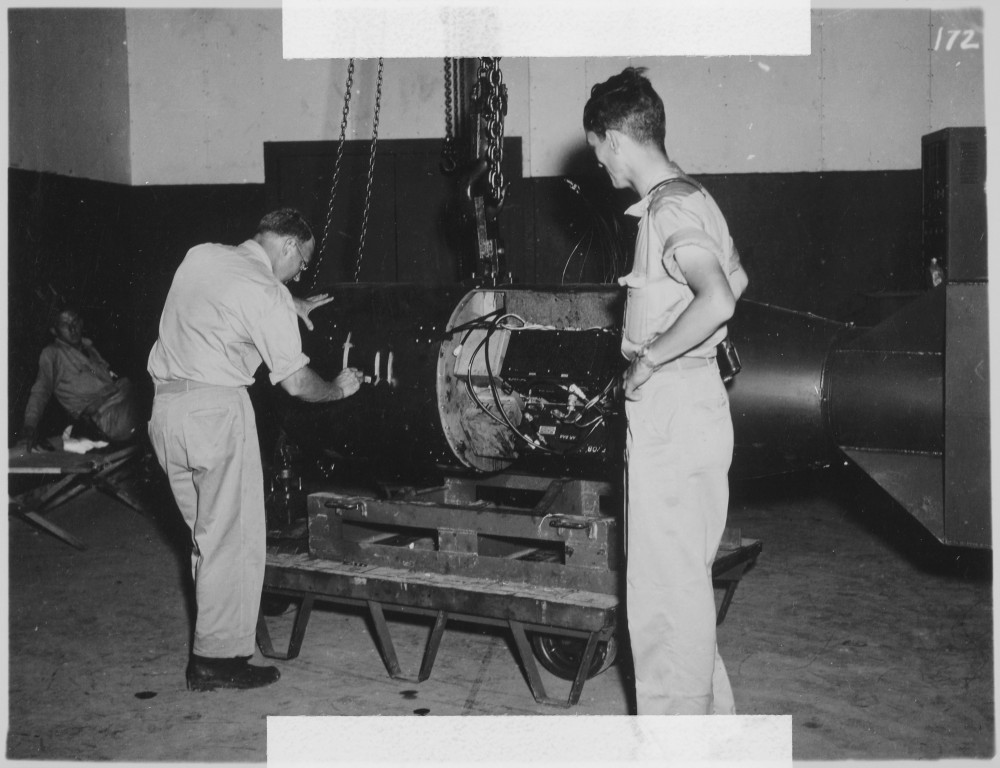Tipping point day

Commander A. Francis Birch (left) assembles “Little Boy,” the atomic bomb dropped on Hiroshima, while physicist Norman Ramsey watches. Photo: public domain
Like most people around my age, the date August 6 is fixed in memory as Hiroshima Day, the day the B-29 Enola Gay dropped the first atomic bomb to be used in war. It flattened 4.7 square miles of the city of Hiroshima in Japan, killing tens of thousands outright and an estimated 90,000 to 140,000 over the months immediately following due to burns and radiation.
It was the penultimate act of mass devastation in a war that had been filled with them and it was not even the deadliest attack on Japan that year. That was the Operation Meetinghouse incendiary bombing of Tokyo in March 1945, which was later estimated to be the single most destructive bombing raid in history. But the Tokyo bombing remains a footnote in the collective memory, while the Hiroshima bombing continues to reverberate as a tipping point event, one shaping the world that followed irrevocably.
Hiroshima was not the only tipping point event to take place on August 6. On this day in 1787, 60 proof copies of the U.S. Constitution were delivered to the Constitutional Convention in Philadelphia. On this day in 1806, the Holy Roman Empire ended and in 1825 the nation of Bolivia was born.

NeXT workstation used by Tim Berners-Lee as the first Web server on the World Wide Web at CERN in Geneva in 1991. Photo: Coolcaesar, Creative Commons, some rights reserved
But another August 6 tipping point may be the only one that has a chance of being as world-altering as the Bomb. It took place almost entirely unremarked in 1991, when Tim Berners-Lee released computer code enabling the creation of the World Web Web, beginning the transformation of the embryonic Internet from the domain of a small number of specialists, technicians and hobbyists into the omnipresent media and communications phenomenon used by billions around the world each day.
We’ve had 71 years to see the unfolding of the post-Hiroshima world. Who can say what information technology will look like in 2052? More than a century after Hiroshima, it could be machine-mediated telepathy, or it could be whispers in the rubble.
Tags: listeningpost








Quite simply….an absolutely brilliant piece of perspective….thank you!